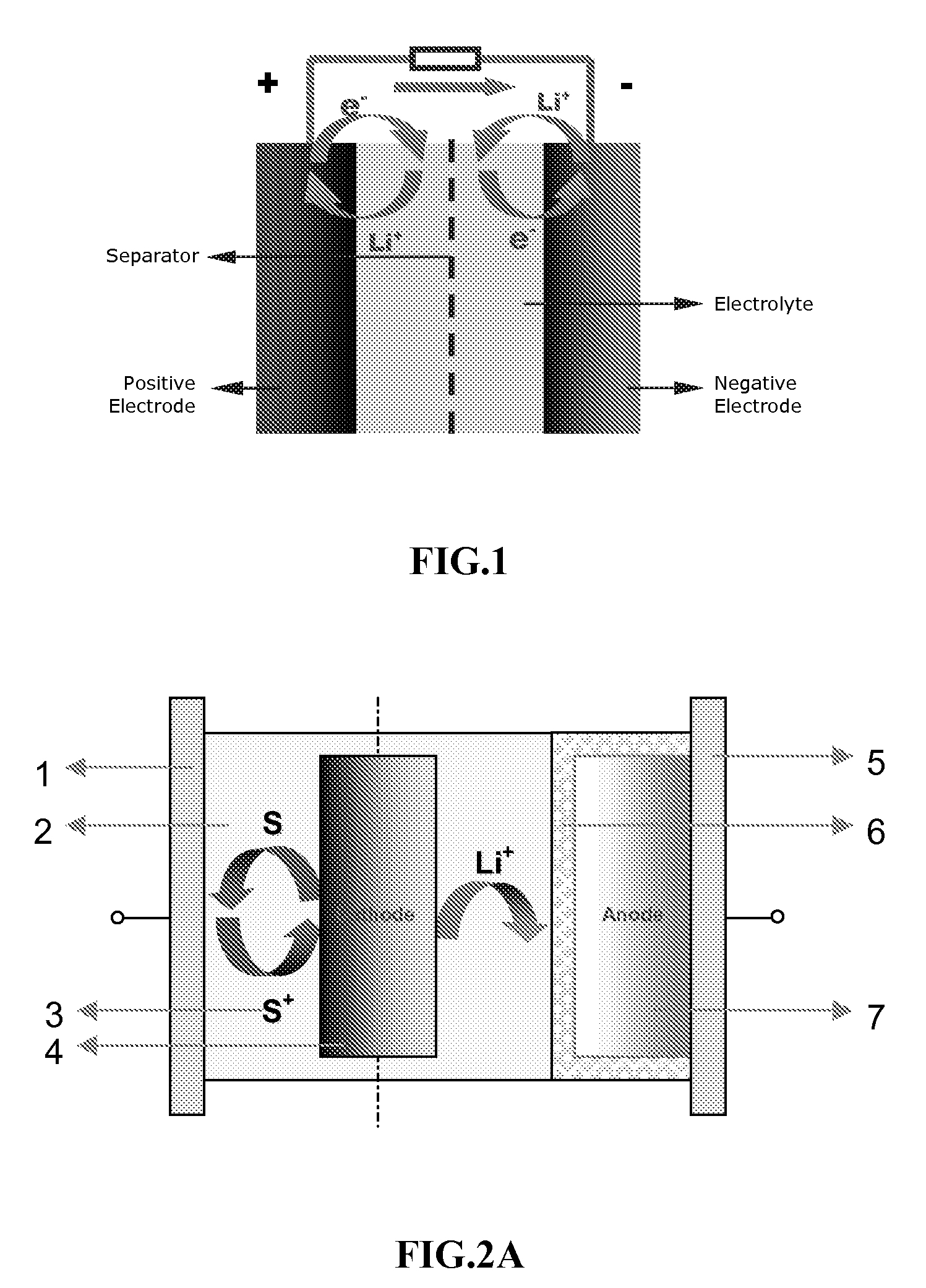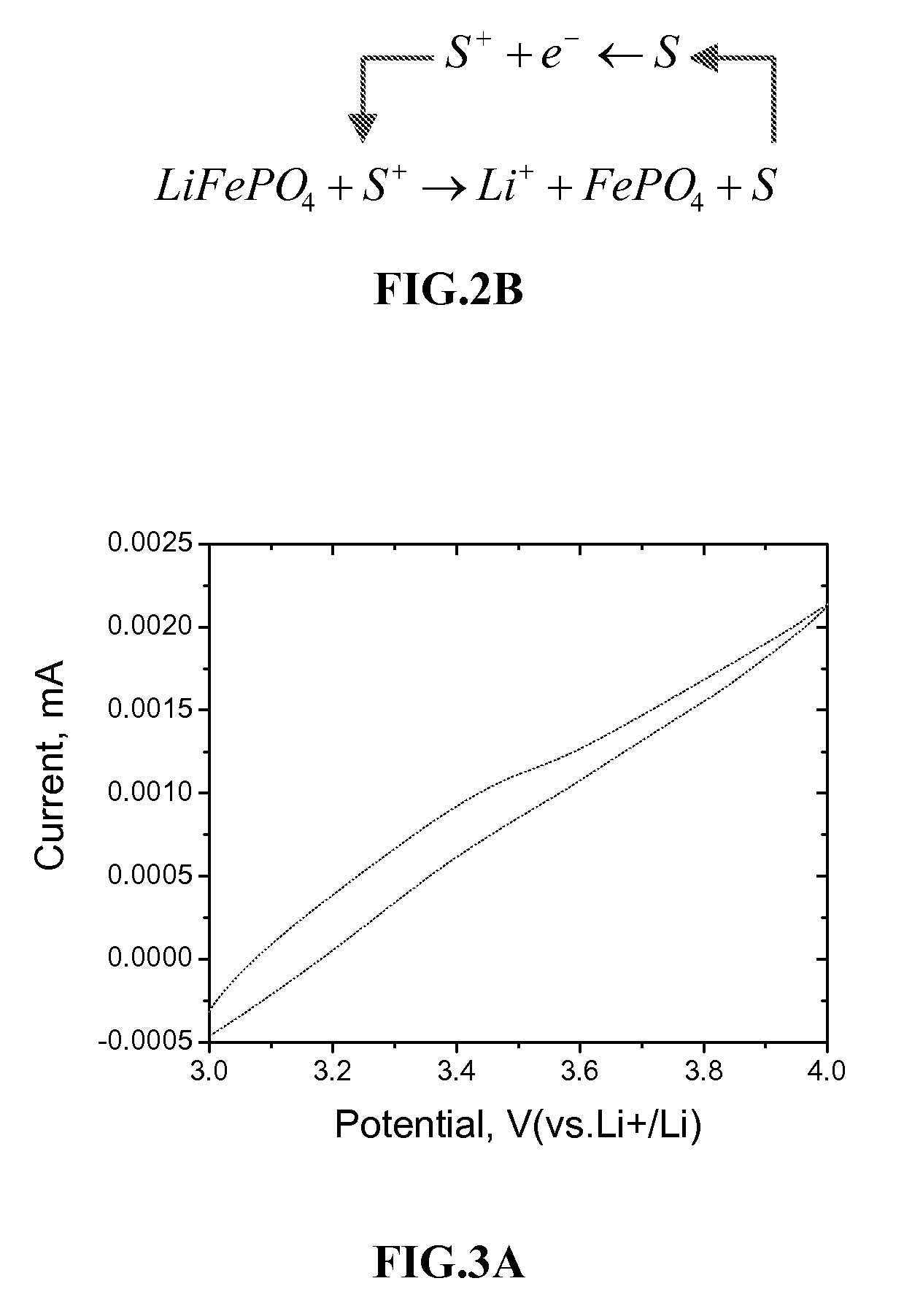Lithium rechargeable electrochemical cell
a lithium-ion battery and electrochemical cell technology, applied in the direction of non-aqueous electrolyte cells, cell components, sustainable manufacturing/processing, etc., can solve the problems of electronic conductivity, reducing the specific energy storage capacity of the electrode, and especially severe situations, so as to reduce the volume of conductive additives, avoid or minimize the amount of conductive additives, and improve energy storage density
- Summary
- Abstract
- Description
- Claims
- Application Information
AI Technical Summary
Benefits of technology
Problems solved by technology
Method used
Image
Examples
example 2
[0065]LiFePO4 powder with particle size distribution of 200˜700 nm was mixed with PVDF and acetylene black in weight ratio of 95:5. A 1.0 cm×1.0 cm electrode sheet comprising 10 μm thick same was used as working electrode, with lithium foil as counter and reference electrodes for electrochemical test. The three electrodes were separated to three compartments by glass frits and filled with EC+DMC (1:1) / 1M LiPF6 electrolyte. In the LiFePO4 electrode compartment, 0.032 M Os(mobpy)3Cl2 and Os(mbpy)3Cl2 was dissolved therein. The volume of electrolyte in cathodic compartment is 30 μl.
[0066]FIG. 3B shows the CV of the electrode system at different scan rates. The finite length diffusion of the compound within the electrode film renders the limiting current being independent of the scan rates. As the potential is higher than 3.55V (vs.Li+ / Li), both Os complexes are oxidized at current collector. Charges (holes) are transported from the current collector to LiFePO4 by the diffusion of the o...
example 1
Materials
[0195]LiFePO4 was synthesized by a variant of solid state reaction [15] employing FeC2O4.2H2O and LiH2PO4 as precursors. Their stoichiometric amounts were mixed and ground in a planetary ball-milling machine for 4 h. Then the powder was calcined in a tube furnace with flowing Ar—H2 (92:8 v / v) at 600° C. for 24 h. After cooling down to room temperature, the sample was ground in agate mortar. The BET surface area of the powder was ca. 5 m2 / g with an average particle size of 400 nm. X-ray diffraction confirmed the phase purity. The Ru-bipyridine complex, NaRu(4-carboxylic acid-4′-carboxylate(4,4′-dionyl-2,2′bipyridine)(NCS)2, coded as Z-907Na was synthesized as described elsewhere [16]. Single walled carbon nanotubes were grown by catalytic laser ablation method. The average diameter of tubes was determined by Raman and Vis-NIR spectroscopy to be ca. 1.3-1.4 nm. Other chemicals were from commercial sources and were used as received.
[0196]SWCNT were dispersed with solutions of ...
PUM
 Login to View More
Login to View More Abstract
Description
Claims
Application Information
 Login to View More
Login to View More - R&D
- Intellectual Property
- Life Sciences
- Materials
- Tech Scout
- Unparalleled Data Quality
- Higher Quality Content
- 60% Fewer Hallucinations
Browse by: Latest US Patents, China's latest patents, Technical Efficacy Thesaurus, Application Domain, Technology Topic, Popular Technical Reports.
© 2025 PatSnap. All rights reserved.Legal|Privacy policy|Modern Slavery Act Transparency Statement|Sitemap|About US| Contact US: help@patsnap.com



